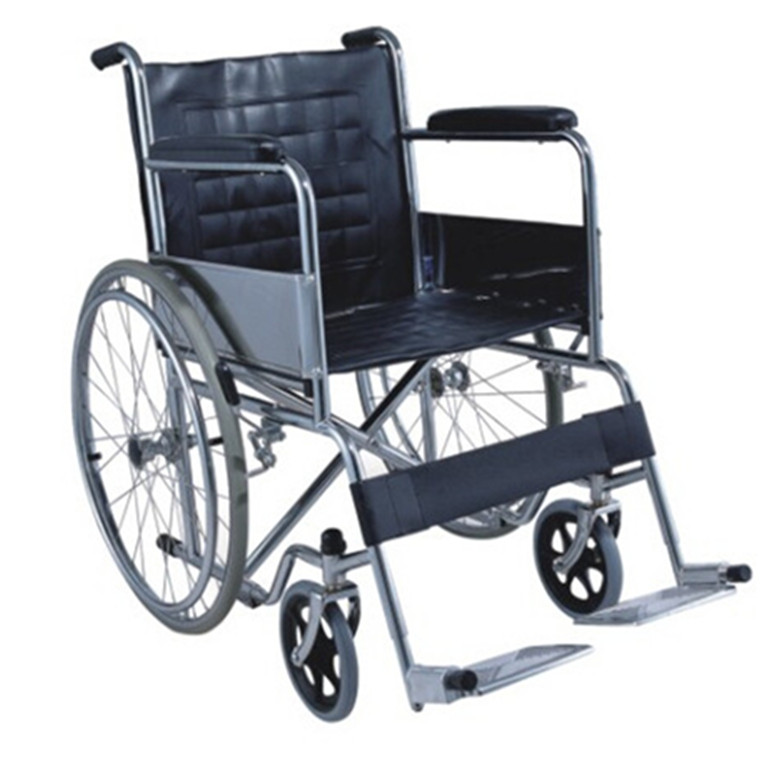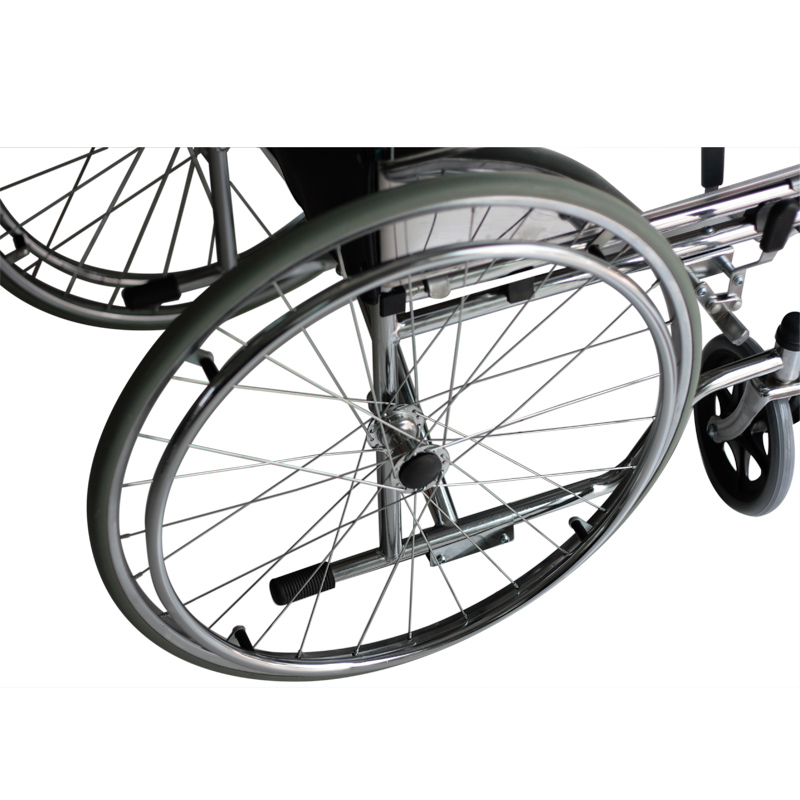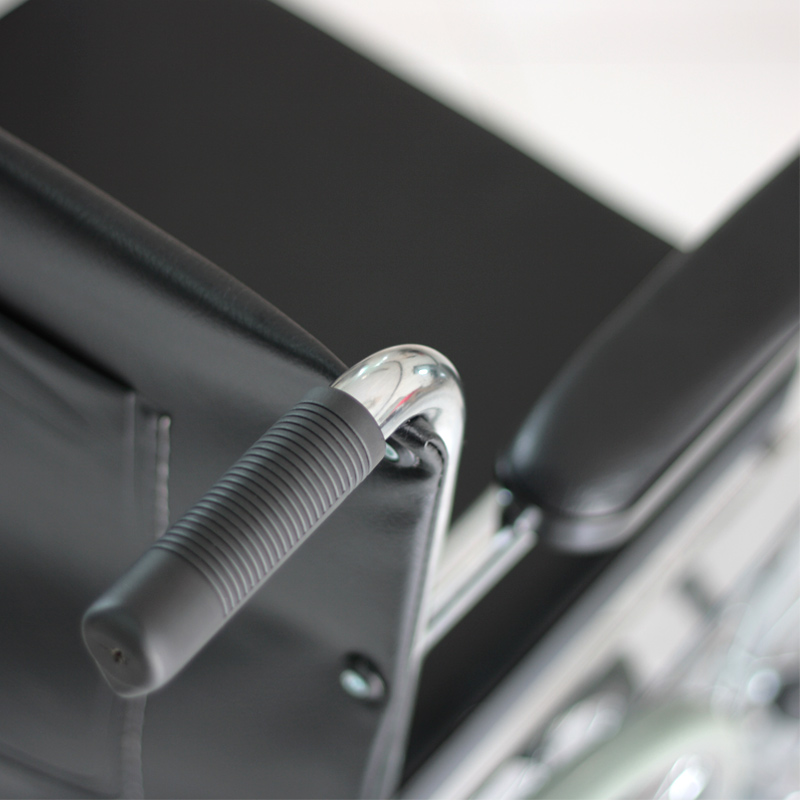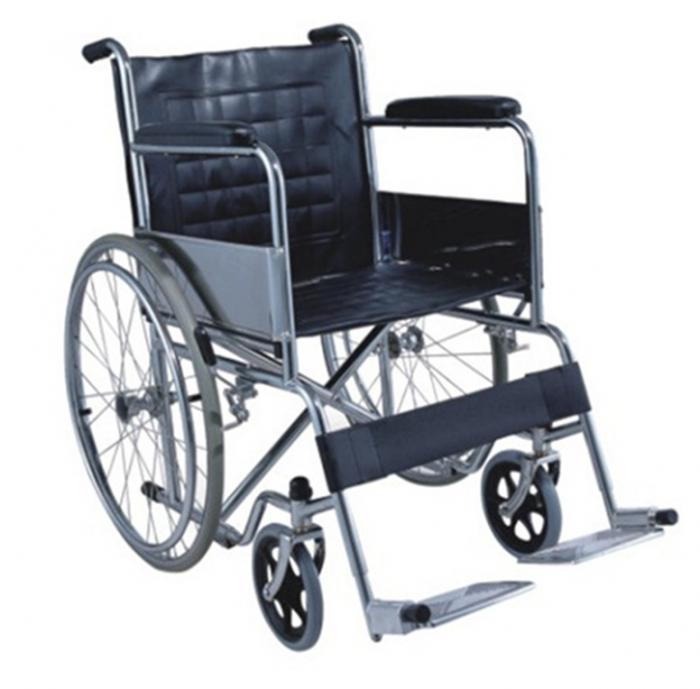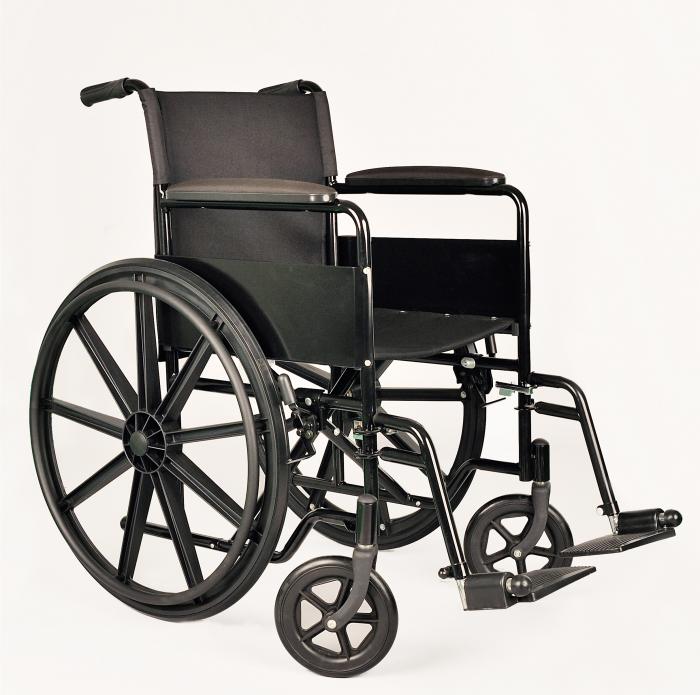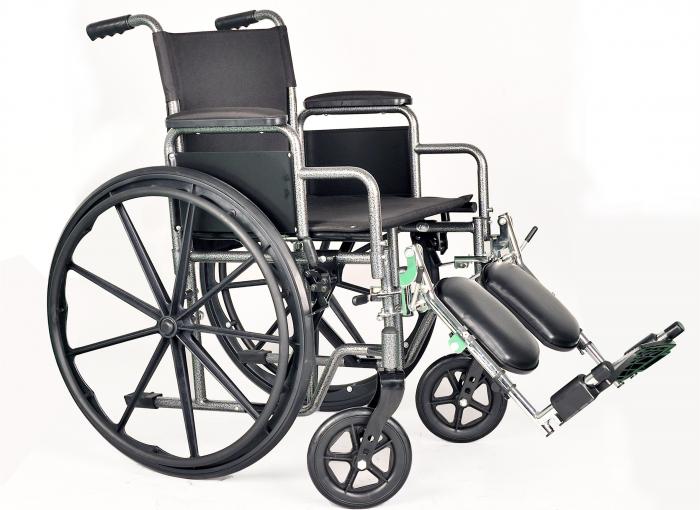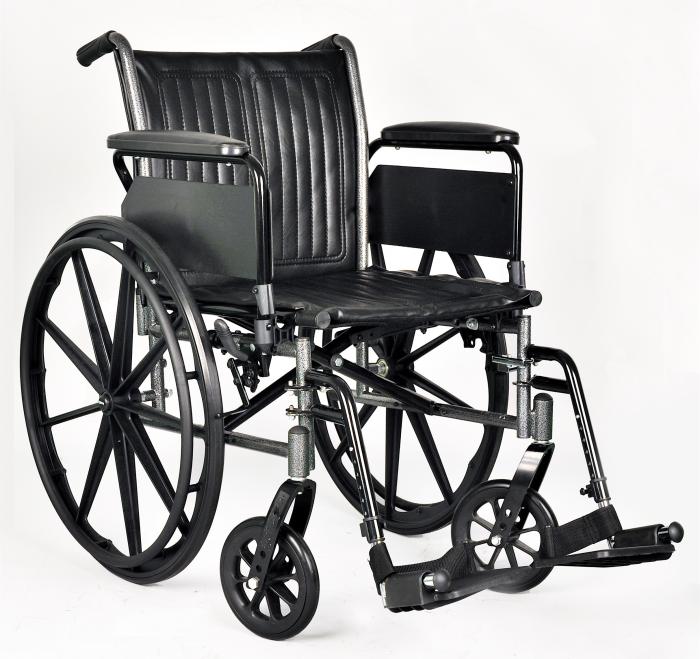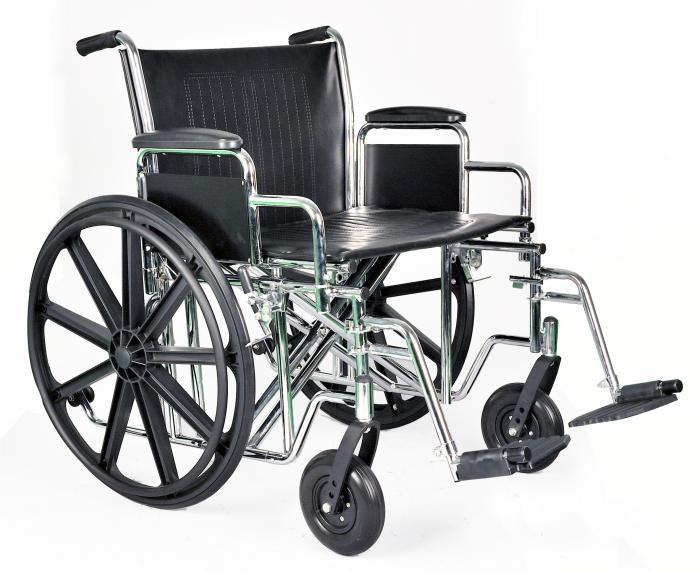| Name: | Manual Wheelchair |
|---|---|
| Model No.: | BES-WL005 |
| Product Name: | Manual Wheelchair |
| Brand: | BESCO |
| MOQ: | 50 units |
| Keywords: | Manual Wheelchairs,Manual Wheelchairs for Sale |
| Sample: | Available |
| Lead time: | 25 days |
| Payment Term: | T/T in advance |
| Country of Original: | China |
| Weight Capacity: | 100 kgs |
| Stock: | Available |
| Factory Address: | Changyuan,China |
| Office: | Zhengzhou,China |
Products Description
Features:
Wheel chairs,
Steel chrome plating,
Fixed armrest,
Fixed footrest,
Aluminum footplate,
Solid tyre wheels,
Seat width:46cm
| Model No. | Seat width | Load capacity | Dimension | N.W | G.W | Packing |
| BES-WL005 | 46cm | 100kg | 91*23*90 | 18 | 20 | 1pc/ctn |
A manual wheelchair is a mobility device with large rear wheels and smaller front casters that allows a person to be self-propelled or be pushed by a caregiver. These chairs require physical effort to move, are often foldable for transport and storage, and are a cost-effective and durable solution for individuals with mobility impairments who still have upper-body strength. Manual wheelchairs come in various types, from standard models with basic features to ultralight, customizable options for active users. How it works Self-propulsion: The user turns the large rear wheels with their hands to move forward. Attendant propulsion: A caregiver or companion can stand behind the wheelchair and push it using the handles. Key Features Large rear wheels: These allow for manual control and propulsion by the user. Small front casters: These provide maneuverability for turning and navigating. Folding mechanism: Many models are designed to fold for easy storage and transport. Footrests and armrests: These can be fixed, removable, or swing-away depending on the model. Types of Manual Wheelchairs Standard manual wheelchairs: . These are often heavier, more economical, and suitable for temporary or less active users. Folding frame chairs: . Designed for portability, they are ideal for users with busy lifestyles. Rigid frame chairs: . Lightweight and more customizable, they can reduce the effort needed to push and are preferred by users who self-propel. Ultralight wheelchairs: . Highly adjustable and built with materials like titanium or carbon fiber for durability and reduced weight, these require expert assessment and customization. Who is it for? Manual wheelchairs are a good option for people who: Have difficulty walking or standing for long periods. Possess sufficient upper-body strength for self-propulsion. Are looking for a cost-effective and simple mobility solution. To use a manual wheelchair, first secure yourself in the seat, ensure the brakes are engaged and footplates are in place, then propel yourself by pushing the handrims on the rear wheels. To stop, pull back on the handrims to create friction or use the wheel lock lever. Turn by pushing one handrim forward while holding the other. To transfer, lock the brakes, remove or swing away footplates, and use your hands to push off the armrests to stand up or move to another surface. Preparing for Use Seat Yourself: Sit comfortably in the wheelchair. Apply Brakes: Push the brake levers forward on both sides of the wheelchair to engage the brakes and prevent movement. Position Footplates: Swing the footrests out of the way, then lower the footplates and place your feet on them for support. Self-Propelling 1. Grip Handrims: Place your hands on the handrims, which are the large metal loops on the rear wheels. 2. Propel Forward: Push forward and down on the handrims to move the wheelchair forward, then return your hands to the starting position and repeat. 3. To Slow or Stop: Pull back on the handrims, using friction to slow down, or push the brake levers forward to lock the wheels. Turning Sharp Turns: For a quick turn in one direction, push the handrim of the opposite wheel forward while holding the handrim of the turning wheel still or moving it backward. Smoother Turns: For a smoother turn, apply even pressure to both handrims, causing the wheels to move at different speeds. Transfers (Moving to Another Surface) Lock Brakes: Secure the wheelchair by engaging the brakes. Swing Footplates: Swing the footplates out of the way. Position the Wheelchair: Move the wheelchair close to the surface you are transferring to. Position Hands: Place your hands on the armrests or the wheelchair seat for support. Stand Up/Move: Push up from the armrests to lift your body and transfer to the desired surface. Caregiver Assistance Handles: A caregiver can assist the user by gripping the handles at the back of the wheelchair to help with movement. Pushing Down Slopes: To descend a slope, a caregiver can push down on the handles to maintain control and prevent the chair from running away. Safety Tips Always lock the wheels when stationary. Do not place heavy objects on the back of the wheelchair, as this can cause it to tip backward. When seated, do not over-reach in any direction, as this could lead to tipping.
